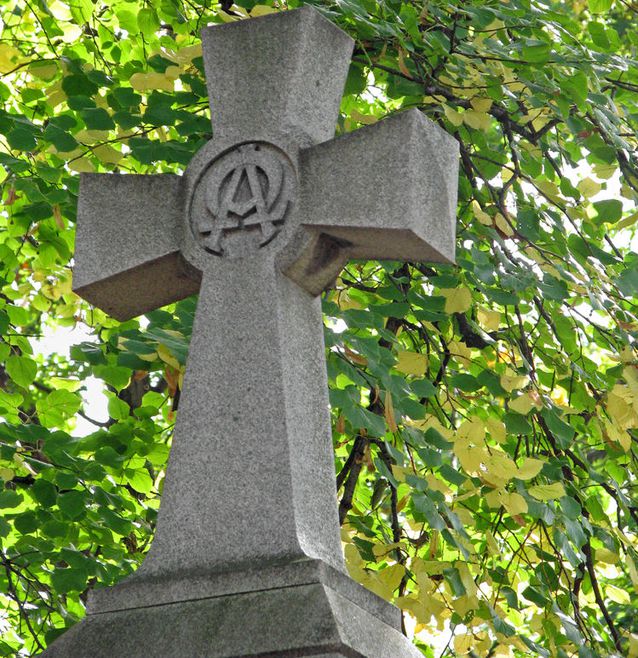Religious Devotion in Funerary Art
Most symbols in a cemetery have some connection with a religion, but many are overwhelmingly religion-specific, like the Cohanim hand sign or the cross for Christians. Generally, these symbols are associated with some sort of religious ritual. There are hundreds of religious symbols, but the following are some of the most recognizable.
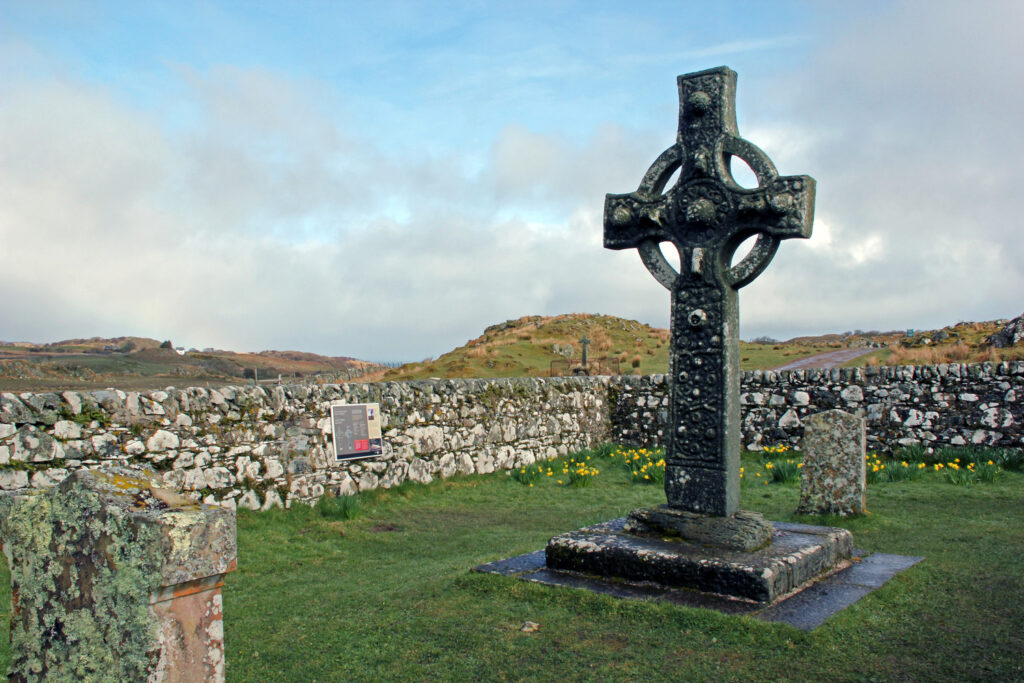
01
Cross
The cross, central to Christian faith, symbolizes Christ’s sacrifice and the promise of resurrection. Often seen on gravestones and memorials, it serves as a reminder of eternal life and redemption through faith. Its simplicity and profound meaning make it one of the most enduring symbols in funerary art.
02
Star of David
The Star of David, a key emblem of Judaism, represents divine protection and the connection between God and humanity. Its six points symbolize the merging of spiritual and earthly realms, making it a powerful and poignant choice for Jewish gravesites.
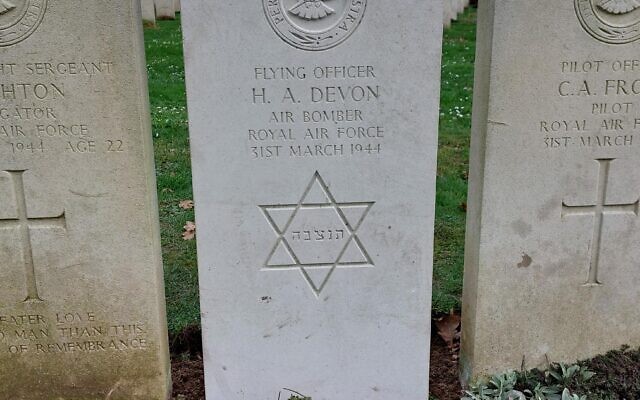
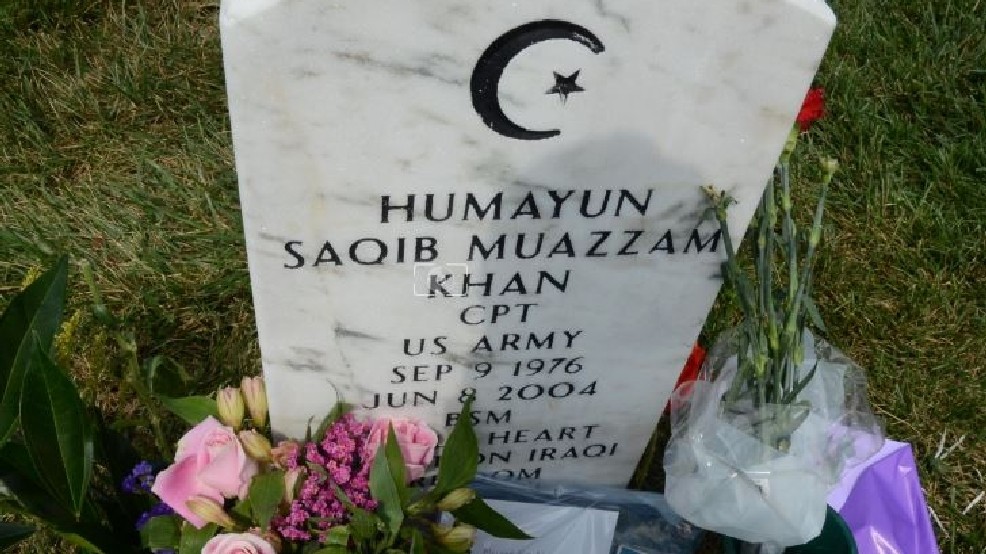
03
Cresent & Star
The crescent and star, often used in Islamic funerary art, denotes faith in Allah and celestial guidance. These symbols reflect the Islamic emphasis on submission to divine will and the hope for eternal paradise.
04
Chi-Rho (XP)
The Chi-Rho, an early Christian monogram formed from the first two letters of “Christ” in Greek, signifies Jesus Christ and triumph over death. This ancient symbol was often used on early Christian graves to affirm faith in salvation.
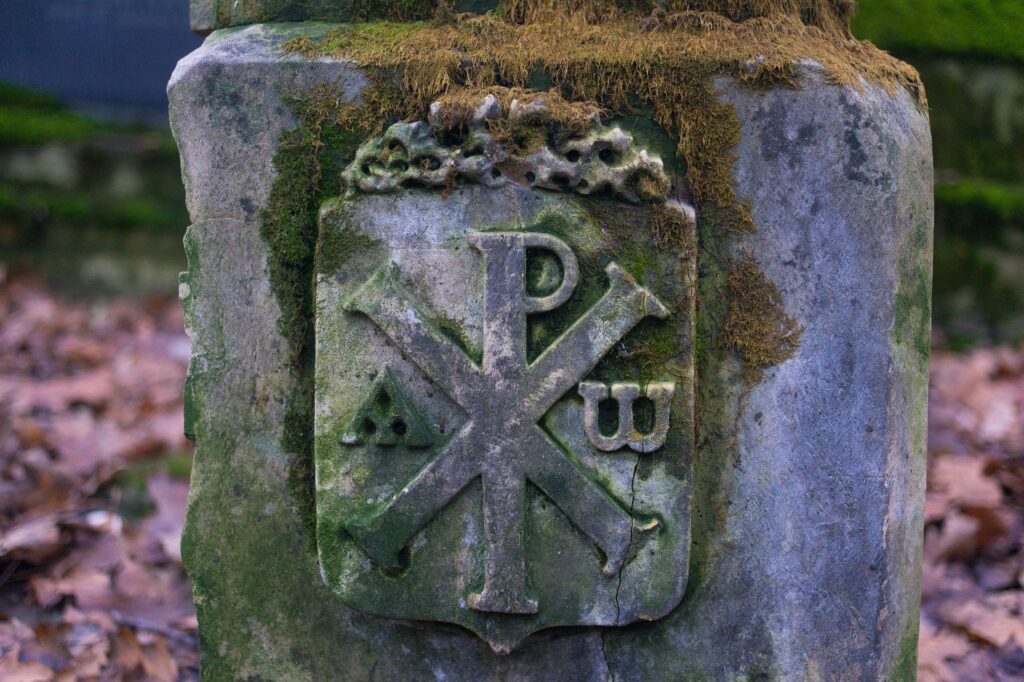
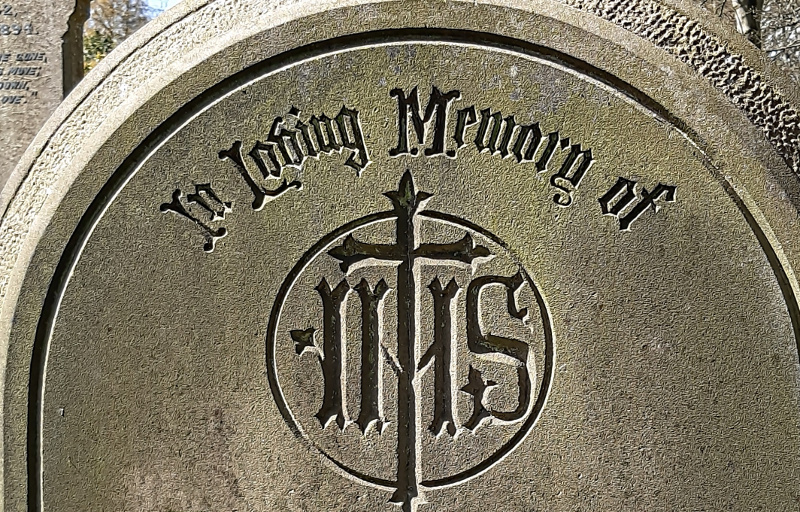
05
IHS or IHC
The symbols IHS or IHC are Christograms, representing the name of Jesus in Greek. Derived from the first three letters of “ΙΗΣΟΥΣ” (Jesus) in Greek—iota (I), eta (H), and sigma (S or C)—they became prominent in Christian funerary art during the Middle Ages and Renaissance. Often inscribed on tombs and gravestones, IHS or IHC emphasizes devotion to Christ and the hope of resurrection. The symbols reflect the deceased’s faith and serve as a reminder of Christ’s role as Savior, offering eternal life to believers.
06
Angels
Angels in funerary art appear as guardians or messengers, embodying protection and the soul’s safe passage to the afterlife. Their presence on tombs conveys divine care and a connection between heaven and earth.
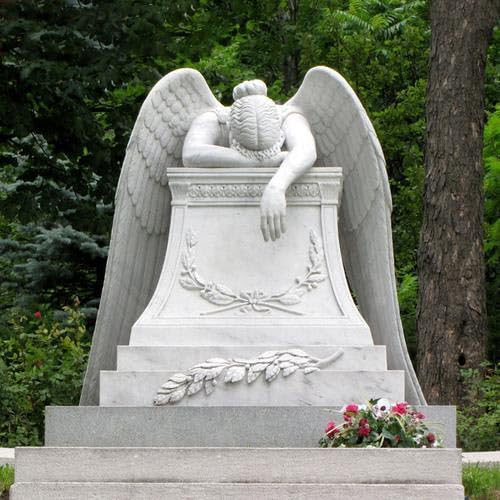
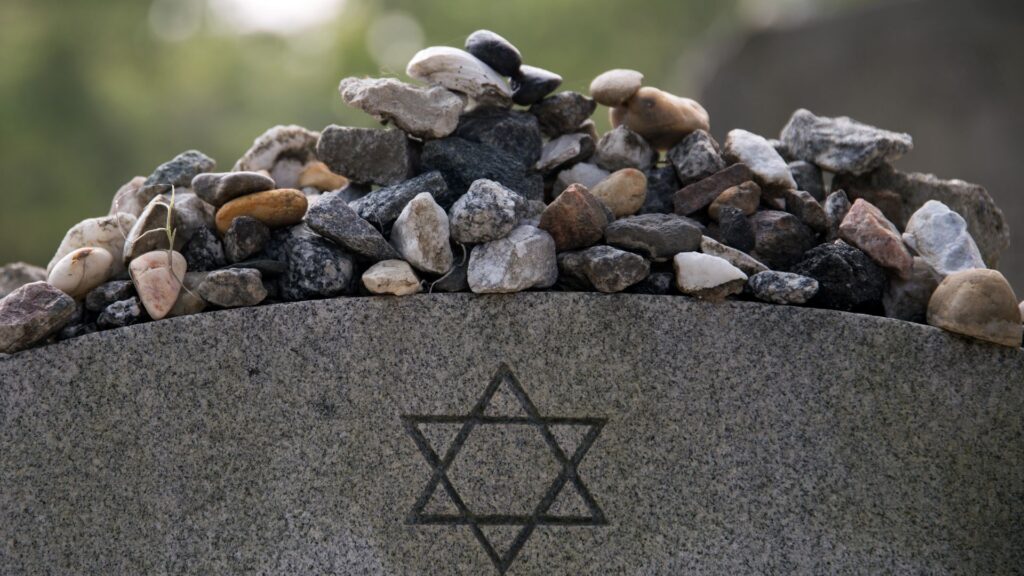
07
Pebbles
Leaving pebbles on a headstone or grave is a tradition rooted in Jewish mourning practices, symbolizing respect, remembrance, and a lasting connection to the deceased. The act of placing a pebble serves as a tangible reminder that the grave has been visited and that the individual has not been forgotten. In ancient times, stones were used to mark and protect graves, and the practice has evolved into a meaningful gesture of honoring loved ones. Unlike flowers, which wither, pebbles endure, symbolizing the permanence of memory and the enduring bond between the living and the departed.
08
Alpha & Omega
The Alpha and Omega, the first and last letters of the Greek alphabet, signify God’s eternal nature, encompassing the beginning and end of all things. Frequently seen in Christian graves, these symbols affirm faith in God’s infinite power and presence beyond life and death.
